Learn how to snorkel in 3 easy steps
(By Steffie De Man)

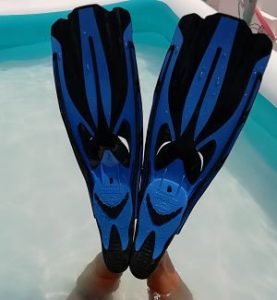
Adjust your fins or ‘flippers’ before snorkeling. Your shoe size is not always the same size as your fins, but your shoe size is a good indicator. If the fins are too tight, there is a good chance that you will get cramps in your feet. If they are too loose, you can lose them in the water. They should be comfortable. Don’t run wearing your flippers while on a boat (or anywhere else for that matter): You will look like a penguin; you can fall and you can break the fins. If you are entering the water from the beach, put them on by the surf and then walk backwards or “moonwalk” into the water. Another option is to put them on while sitting in the shallow water.
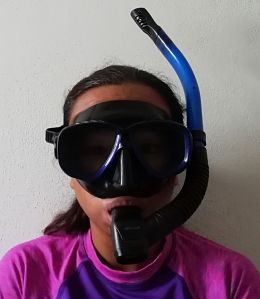
Put the mask on your face and inhale so that the mask sticks to your face. Then you pull the plastic strap of the mask backwards. This should be at the height of your eyes, so just above the ears. If the band is too high or too low (e.g. on or under the ears), water can seep into the mask. Also make sure that the mask comes over your nose. If you have long hair, make a bun or ponytail and just let the strap rest on your bun or tail. Large pins or hair clips are not recommended.
Do not tighten the strap too hard, because then you will get a headache and water can also get into the mask.
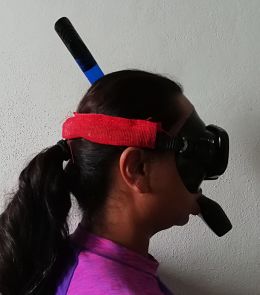
To avoid your mask fogging up, you can rub your mask with a special product that prevents this or even better with your own saliva! (Don’t forget to rinse the mask afterwards!) There’s nothing more annoying than a mask fogging up all the time! If you have just bought a new mask: rub some toothpaste on the inner lenses and let it sit overnight. The next day, rinse everything and your mask is ready to use.
You can wear your snorkel on the left or the right: if you are left-handed like me, hang it on the left side of the mask strap, if you are right-handed, hang it on the right side. Are you really unable to breathe through that pipe? Then just let it hang and hold your breath when you look into the water. Keep in mind that it is much more tiring to swim without a snorkel.
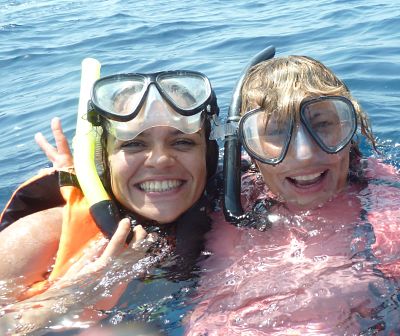
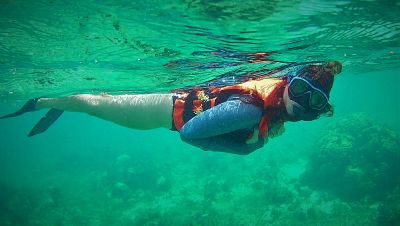
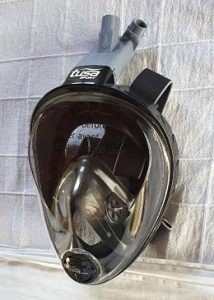
- Practice makes perfect! If you have your own snorkeling equipment, try it out in the pool of your hotel. Using a new mask is just like breaking in a new pair of shoes. If you plan to swim with the whale shark, be sure to practice beforehand as there is no time to practice snorkeling during this excursion.
- When booking a snorkeling excursion, check the age at which children are allowed to enter the water. On the Contoy and Isla Mujeres excursion, only children from the age of 12 are allowed to snorkel in the official coral reef of Contoy National Park.
- Do not pressure your partner or children to enter the water. During the winter months the water can be a bit cold here and children are extra sensitive to this. So chances are that they will not complete the entire activity. You can expect the highest divorce percentage on the trip to the whale sharks! So if your partner or child doesn’t want to snorkel, let them decide.
- If you have a full mask, you can continue to breathe through your mouth. Many tourists use these masks and they are great for beginners and those who prefer not to use the snorkel. The only disadvantage, however, is that the elastics often do not last long and therefore the mask sometimes hangs completely crooked.
- Don’t be shy to ask for extra help from your guide.
